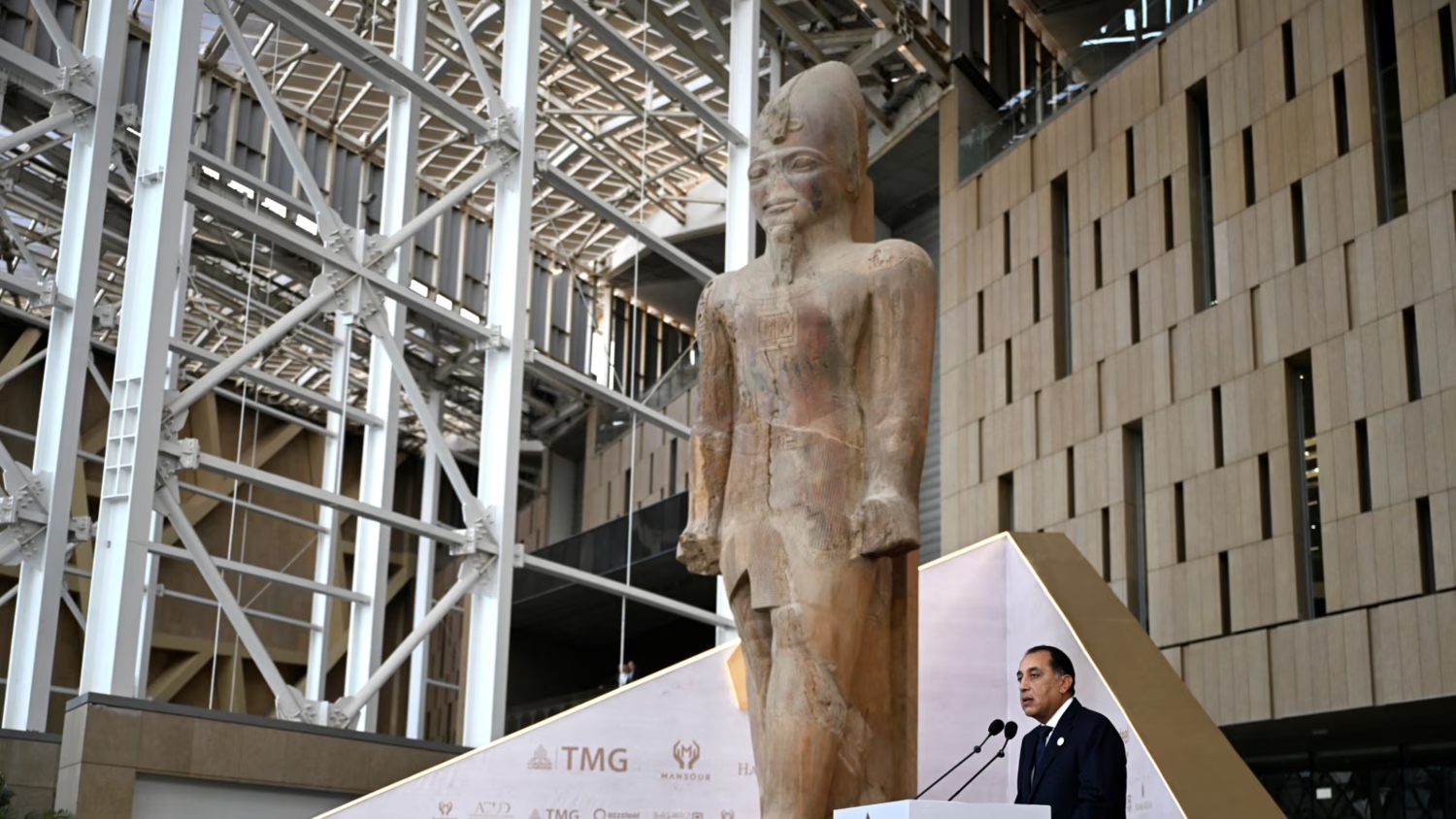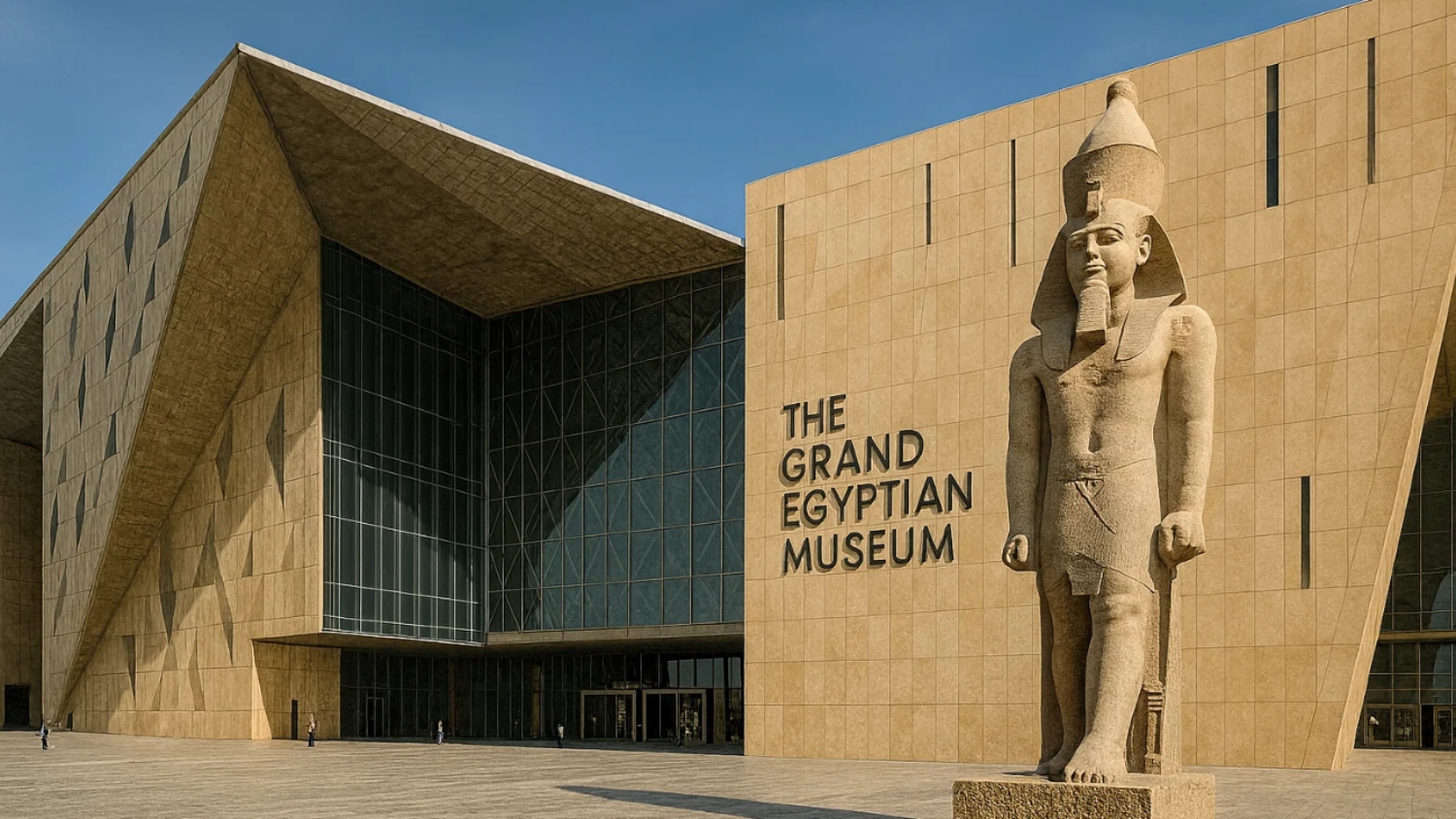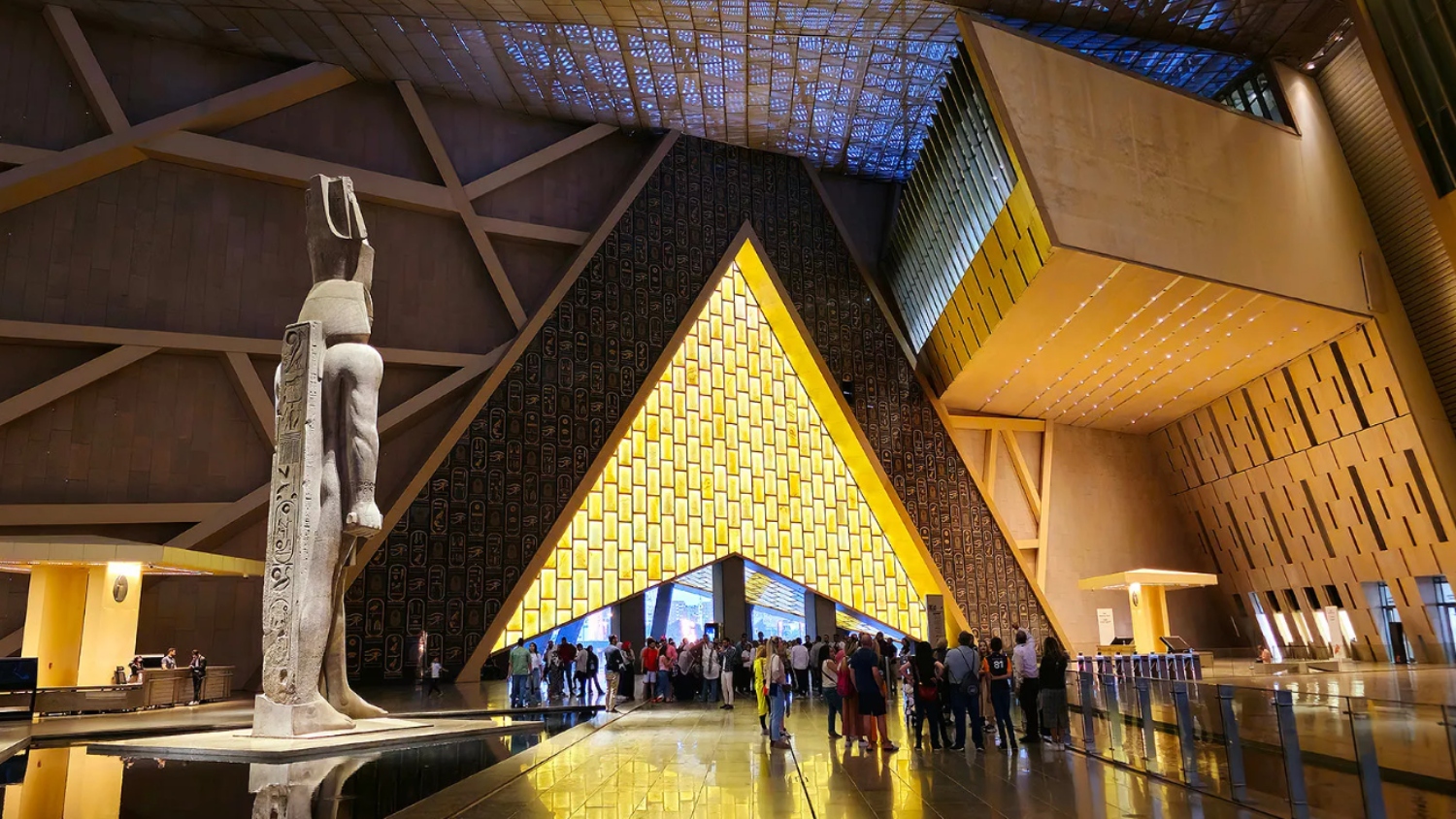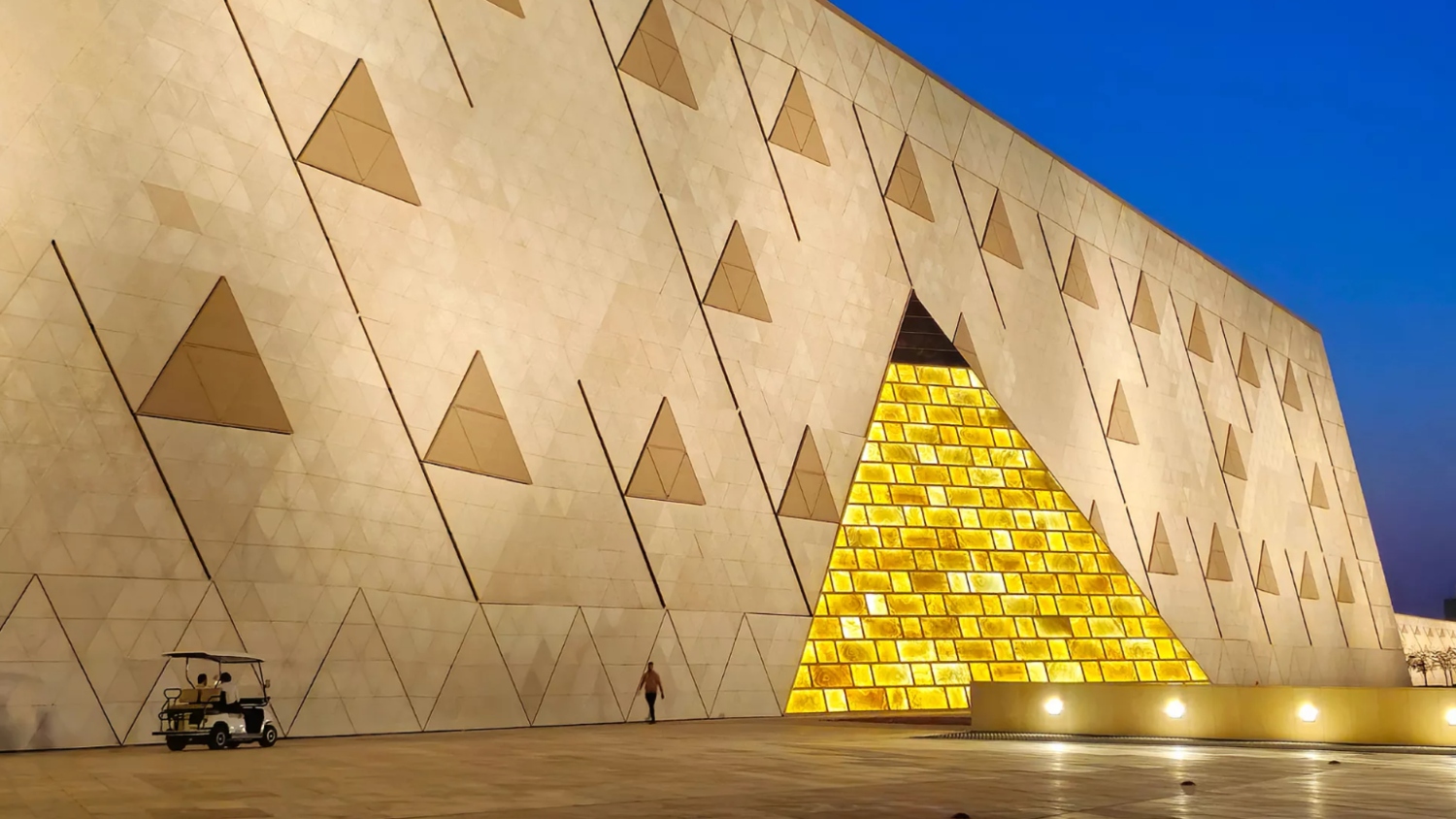It has taken more than 20 years, countless delays, and over a billion dollars, but at long last, the doors of the Grand Egyptian Museum (GEM) have swung open to the world on November 1st – and what a spectacle it is.
Set on the edge of the Giza Plateau, in the shadow of the Great Pyramids, the museum feels less like a building and more like a portal through time. The moment you arrive, sunlight catches the sand-coloured façade of the vast geometric marvel echoing the angles of the ancient wonders nearby. Step inside, and you’re immediately met by an 83-ton statue of Ramesses II, towering over the Grand Hall looming like a king reclaiming his empire.
It’s a breathtaking welcome and feels almost symbolic. After two decades of anticipation, Egypt’s greatest treasures finally have a home worthy of their grandeur. Here, ancient history isn’t trapped behind glass, but rather, unfolds around you in immersive galleries, interactive displays, and awe-inspiring design that bridges millennia.

The Visitor Experience
The ascent through the six-storey grand staircase is part of the experience. Statues of kings and queens line your climb, with each step serving as a transition deeper into Egypt’s layered civilisation. At the top, floor-to-ceiling windows frame the pyramids of Giza with a view that reminds you you’re not just in a museum, you’re in a place where history still breathes.
From there you enter the 12 main themed galleries. They’re laid out both chronologically and thematically: Society, Royalty, Beliefs. Starting from the prehistoric era up to Greco-Roman times, the narrative spans thousands of years, yet never feels overwhelming, giving you space, time and context.
Evidently, the star attraction is the complete treasures of pharaoh Tutankhamun. For the first time ever, more than 5,000 artefacts from his tomb sit together under one roof. These include funeral beds, gilded chariots, his iconic golden mask, amongst many other things the world has rarely seen in one place.
The museum also provides context with everyday objects, smaller figures, reliefs showing daily life, and workshops in the background that help you understand how things were made and why they remain. And then you exit, maybe refuel in one of the restaurants, stroll the landscaped grounds, gazing back at the pyramids with fresh eyes.

The History of the Grand Museum
The idea for the museum dates back to the early 1990s. Officially, the foundation for the GEM was laid around 2002, and construction began in earnest in 2005. That said, the path wasn’t smooth. The project, worth over USD 1 billion, was delayed repeatedly by political upheaval (the Arab Spring of 2011, shifts in government), regional instability, and global disruptions like the COVID-19 pandemic.
This monumental project is said to be needed for several reasons. Egypt previously had an ageing central museum in Cairo, and Egypt’s treasures required a new purpose-built facility to call home. The GEM provides a modern, immersive heritage experience the previous central museum was missing, thus anchoring tourism growth in Egypt as part of a broader economic strategy.

The Transition From Old to the New
The previous central Egyptian Museum in Cairo opened over a century ago in the early 1900s, and over time, became crowded, dated, and limited in its capacity. Upon our 2023 visit, the Egyptian Museum in Tahrir Square felt overwhelmed by its own riches. There were artefacts stacked and scattered, rooms dimly lit, and little sense of organisation. It was a place overflowing with history, but desperately in need of a new home.
With GEM’s completion, many of the most famous artefacts – including the full Tutankhamun collection – have been transferred to the new museum. Large statues and monuments also made the move: the Ramesses II colossus formerly at Ramses Square in central Cairo now assumes pride of place in the GEM’s atrium.
For travellers, this means a shift. While the “big draw” pharaonic heritage will be best experienced at the GEM, the old museum will still remain open and offer value, but with fewer marquee pieces. If you’re visiting Egypt soon, our advice is to budget time for the GEM first, if possible.

A New Legacy
For those yearning for luxury, history, and destination-awareness all in one, the GEM is a signal that Egypt is presenting itself both as a relic of the past, and a modern destination with heritage at its heart.
The setting alone makes it spectacular: standing near the Giza Pyramids, the museum’s architecture reflects them, the interior spaces give them context, and the collection anchors them in humanness. Visitors don’t just “go to a museum” at the GEM. They step into the world the pharaohs built and the modern world re-imagines.
With culture-led tourism growing, the GEM offers a fresh reason for travellers to go to Cairo (and stay around Giza, beyond the pyramids drive-by). It becomes a destination in its own right.
Featured image: RICS









